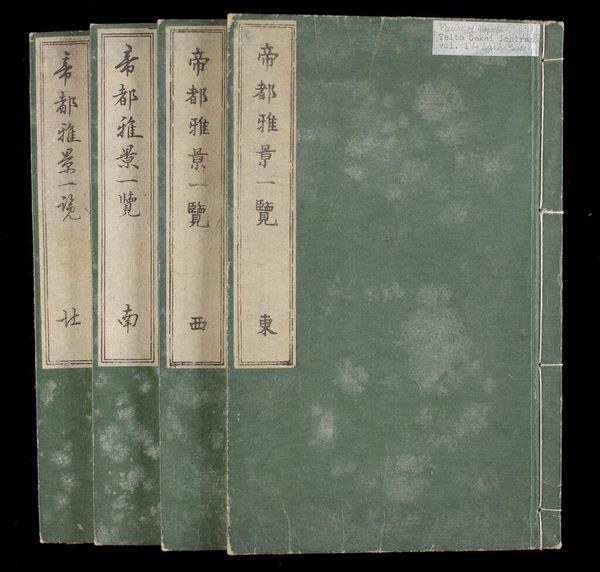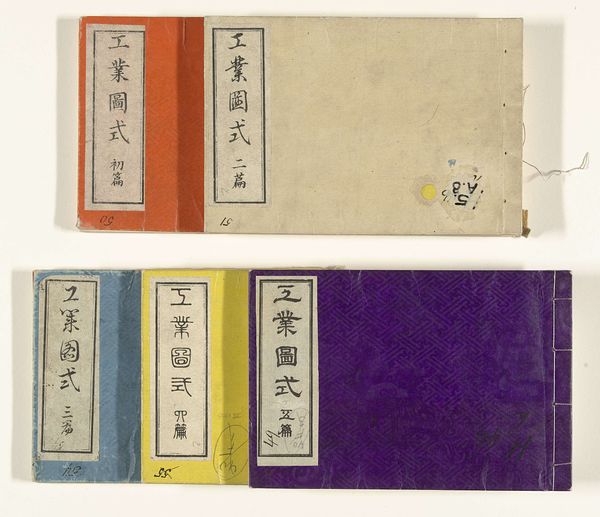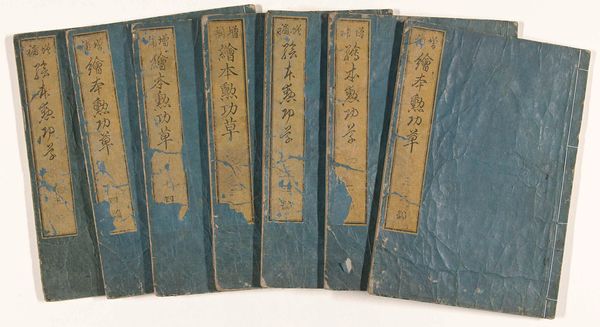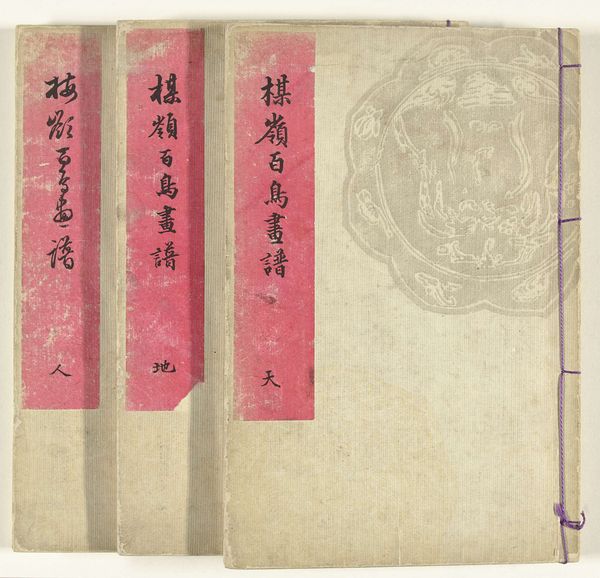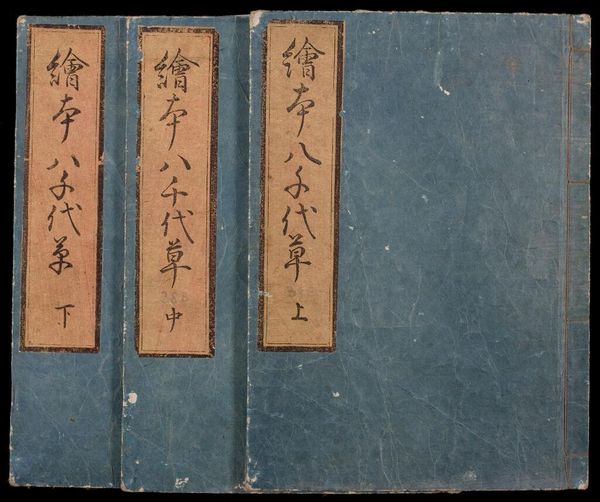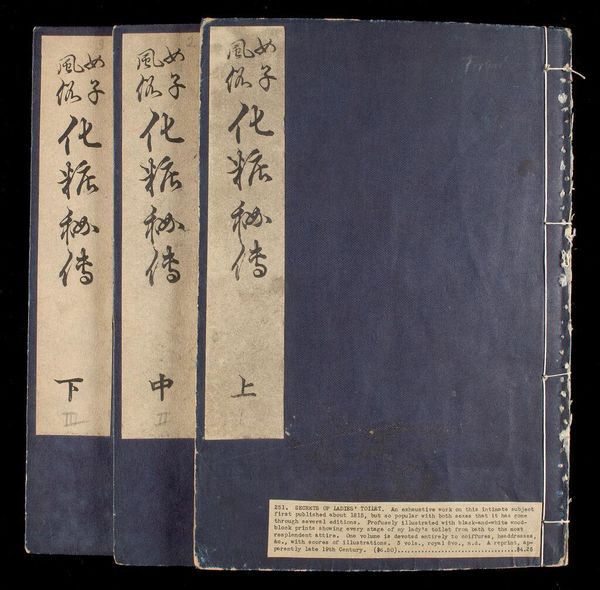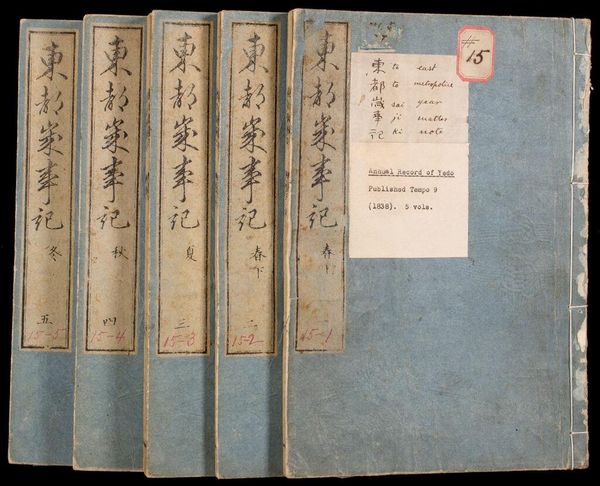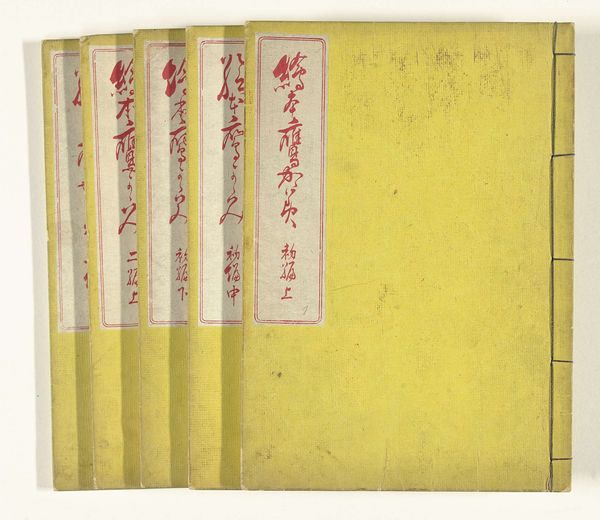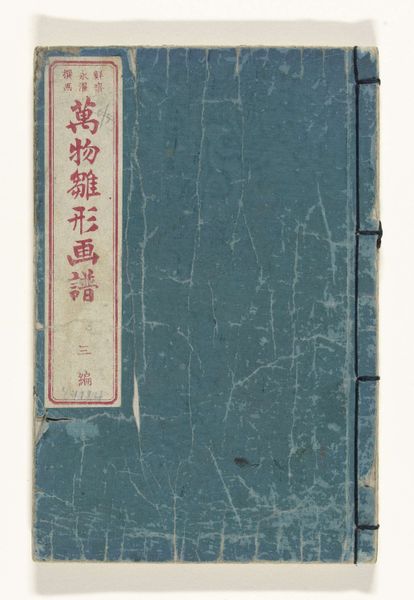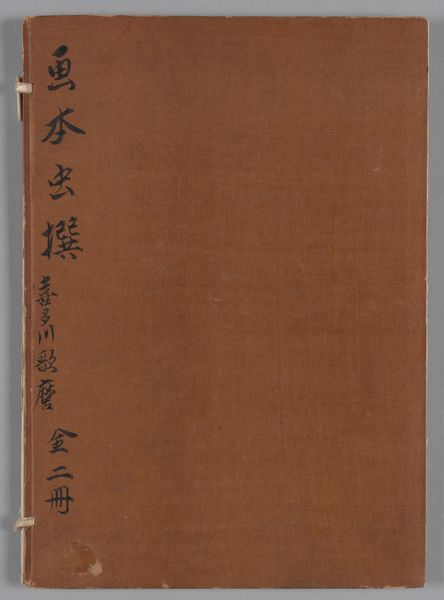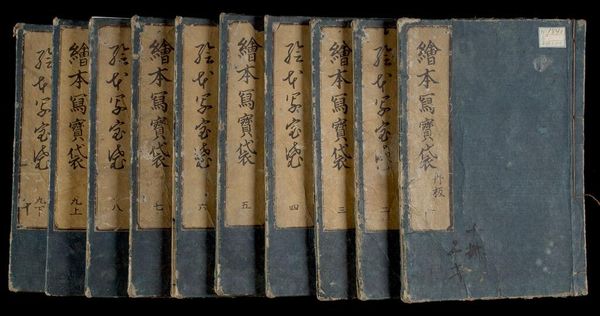
Copyright: CC0 1.0
Curator: Here we see a selection of Katsushika Hokusai's "Hokusai Manga," sketchbooks held in the collection of the Harvard Art Museums. They appear quite worn. Editor: The textures of the covers, the varied paper stocks, really speak to the intensive handling these books must have undergone. I wonder about the hands that turned these pages? Curator: Absolutely. Their existence speaks to the rise of a commercial art market in Edo-period Japan, where artists like Hokusai catered to a burgeoning middle class. Editor: The "Manga," though, transcends a purely commercial context. It functions as a visual encyclopedia of Japanese life and lore, challenging social hierarchies by representing all classes. Curator: And consider the labor involved in producing these woodblock prints. The artistry isn't solely Hokusai's. The carvers and printers played crucial roles in disseminating his vision. Editor: It's fascinating to consider their collaborative nature. These sketchbooks embody a democratizing impulse, making art accessible to a wider audience and reflecting their lived experiences. Curator: Indeed, it reframes art from a singular creation into something more socially produced. Editor: It encourages us to see art as a reflection of society, and these sketchbooks as more than just artworks.
Comments
No comments
Be the first to comment and join the conversation on the ultimate creative platform.
